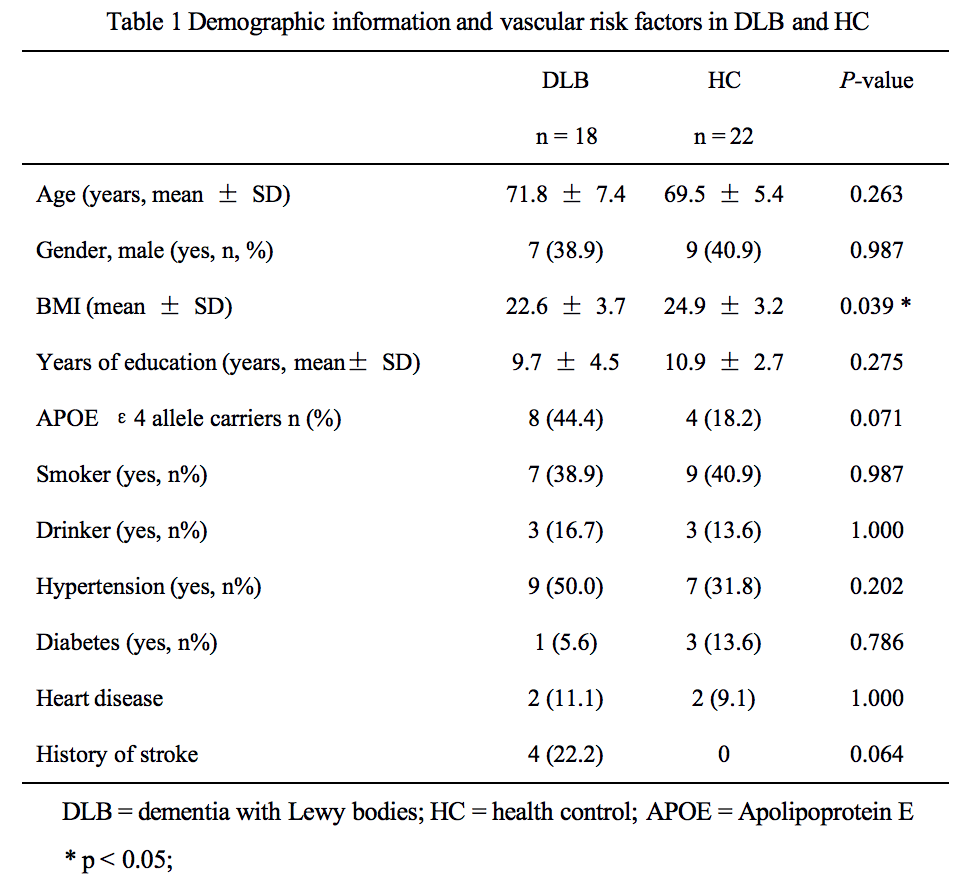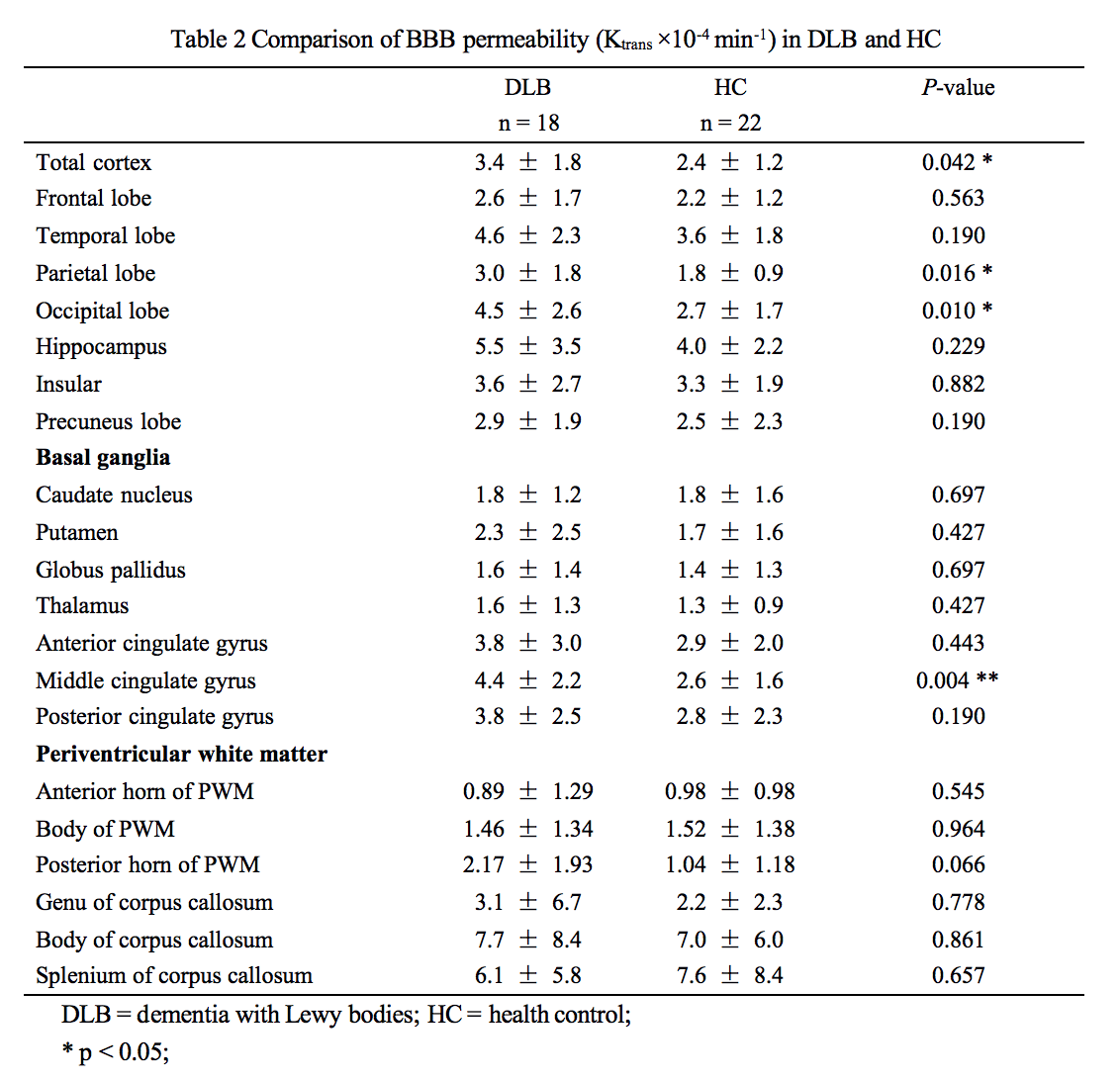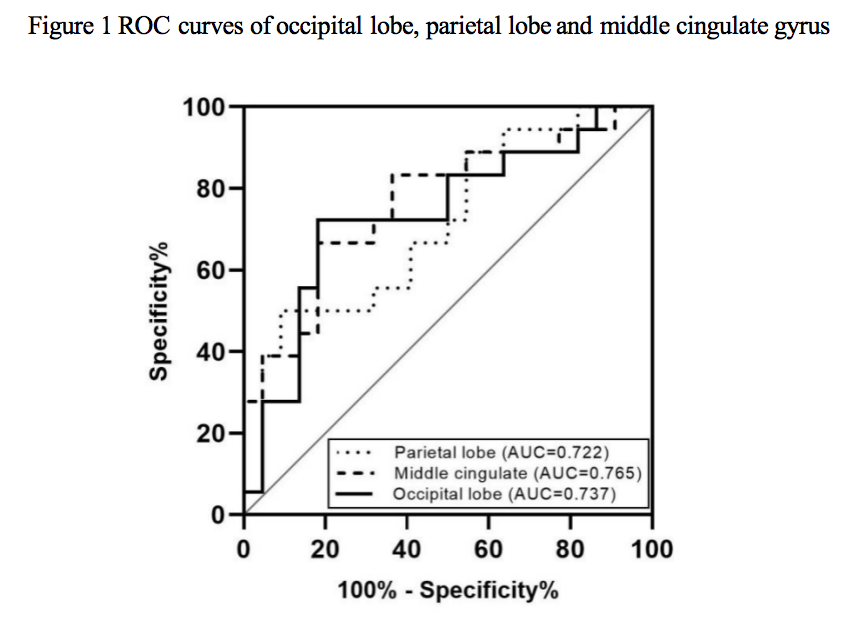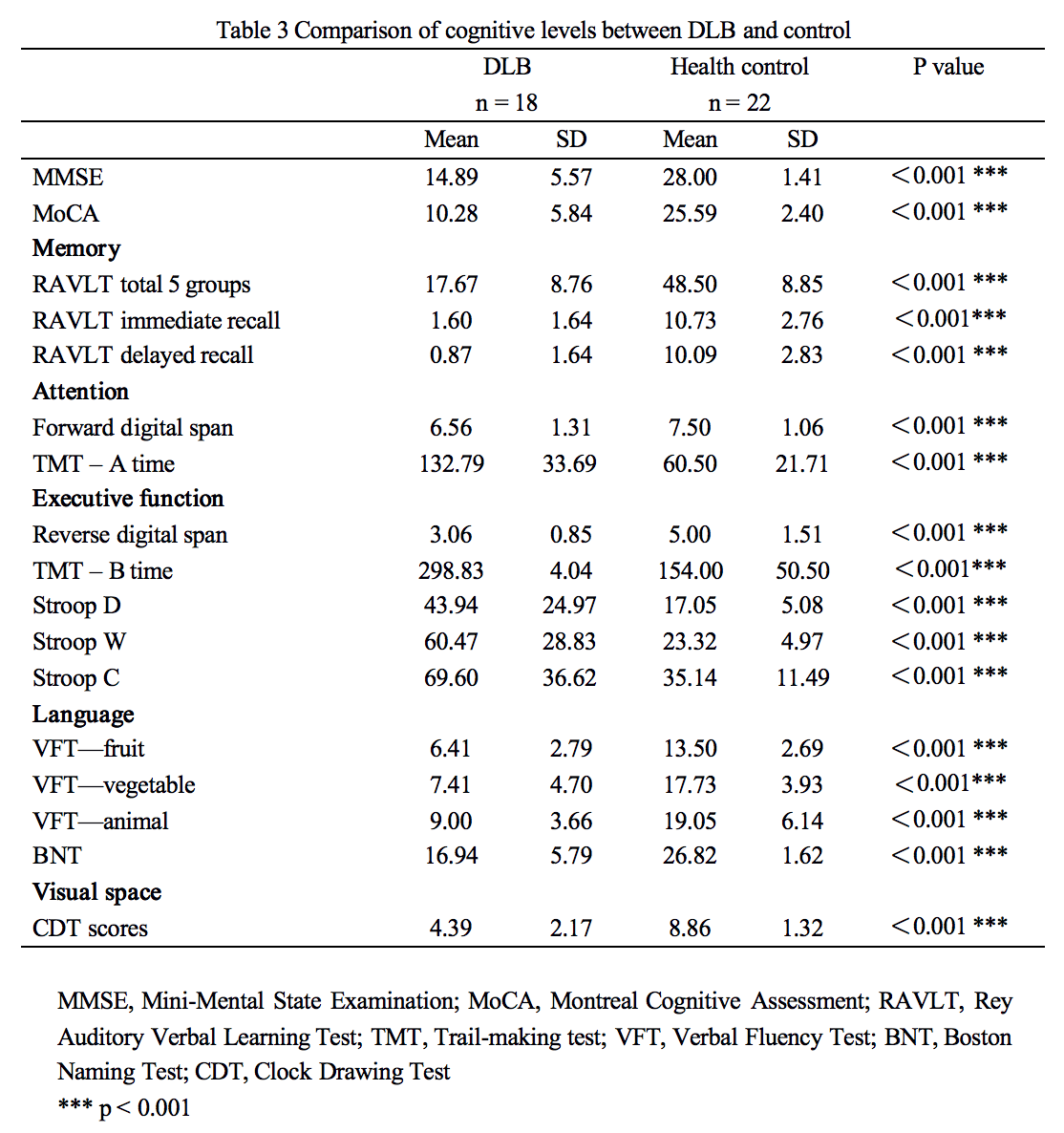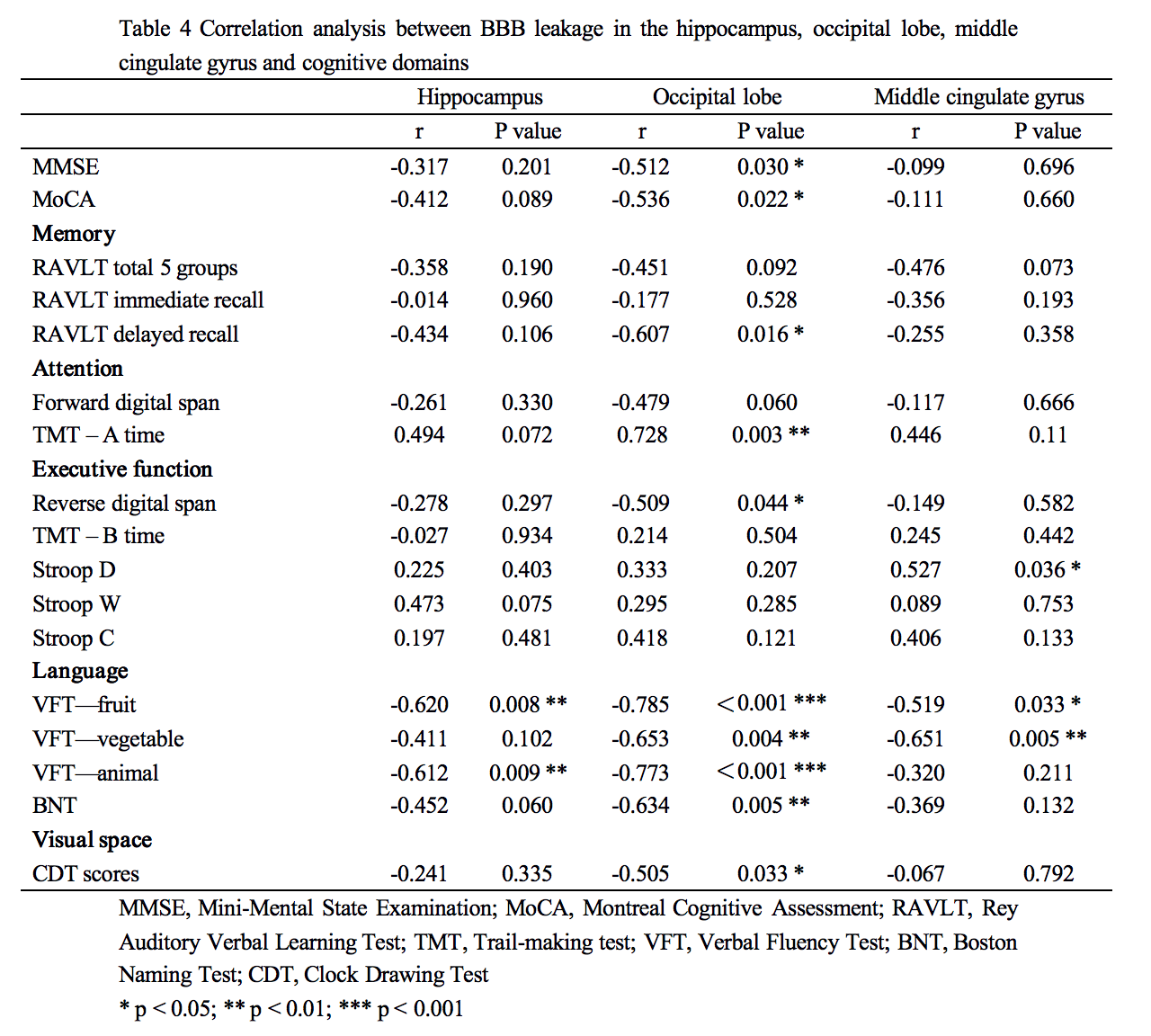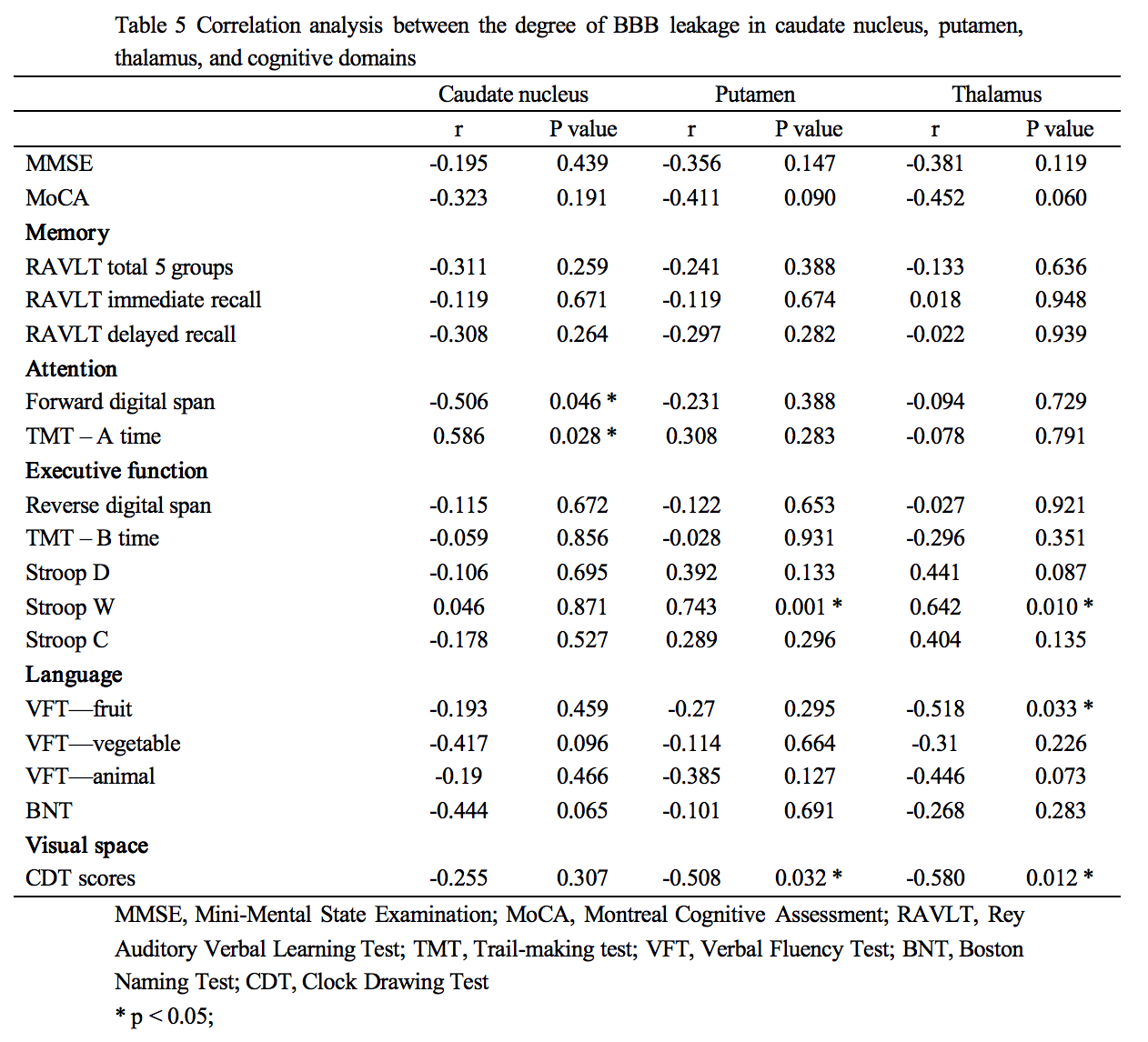Category: Cognitive Disorders (non-PD)
Objective: To explore the characteristics of BBB breakdown in DLB and find the correlation between leakage and cognitive domains.
Background: These years, researchers found that vascular pathology may play an important role in DLB[1]. So far, there are few studies on the permeability of the BBB of DLB, which has potentially clinical management implications.
Method: In this study, 18 DLB patients who attended cognitive impairment clinics, and 22 healthy controls recruited through the community were consecutively enrolled. The basic information of the subjects was collected, and image acquisition of DCE-MRI was performed on a Siemens Prisma machine after completing the neuropsychological scale assessment. The permeability of the BBB was assessed using the Ktrans value. Logistic regression, multivariate linear regression and other methods were used to explore the relationship between blood brain barrier leakage and cognitive function.
Results: The demographic, medical history and APOE ε4 allele were summarized in table 1. The mean BBB permeability Ktrans values of the main cortex, periventricular white matter and cingulate callosum ROIs are summarized in table 2. In parietal lobe, occipital lobe and midcingulate cortex the permeability was remarkably increased in DLB according to the Ktrans. Although occipital BBB leakage was greater in DLB group when compared with controls. We found that Ktrans values for the occipital lobe (AUC = 0.737, p = 0.011), parietal lobe (AUC = 0.722, p = 0.017), and the middle cingulate gyrus (AUC = 0.765, p = 0.004) were able to distinguish the two groups relatively well (Figures 1). Comparison of overall cognitive performance between DLB and control (Tables 3) showed that the DLB group performed worse than the control group both overall and across the cognitive domains.Correlations between impairment of the BBB in key cortical brain regions and cognitive domains were showed in tables 4. Increased occipital BBB leakage was associated with increased time of TMT – A. In addition, RAVLT delayed recall, reverse digital span length, and CDT were negatively correlated with occipital BBB leakage. There was also a correlation between the degree of BBB leakage in deep subcortical nuclei and impairment in each cognitive domain (Tables 5).
Conclusion: DLB patients have increased BBB leakage mainly in the occipital lobe, parietal lobe and middle cingulate gyrus. BBB damage in different brain regions affect relevant cognitive domains.
Table 1
Table 2
Figure 1
Table 3
Table 4
Table 5
References: 1.Toledo JB, Abdelnour C, Weil RS, et al. Dementia with Lewy bodies: Impact of co-pathologies and implications for clinical trial design. Alzheimers Dement. Jan 2023;19(1):318-332. doi:10.1002/alz.12814
To cite this abstract in AMA style:
ZC. Chen, J. Gan, Y. Ji. Blood-brain Barrier Breakdown in Dementia with Lewy Bodies [abstract]. Mov Disord. 2024; 39 (suppl 1). https://www.mdsabstracts.org/abstract/blood-brain-barrier-breakdown-in-dementia-with-lewy-bodies/. Accessed December 15, 2025.« Back to 2024 International Congress
MDS Abstracts - https://www.mdsabstracts.org/abstract/blood-brain-barrier-breakdown-in-dementia-with-lewy-bodies/

